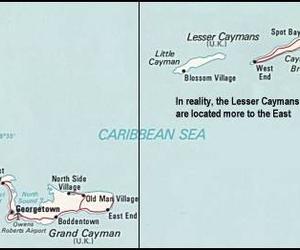Cayman Islands prepare for more Cuban migrants
- Submitted by: lena campos
- Society
- 06 / 08 / 2013

Facing a potential increase in the flow of Cuban migrants, authorities in the Cayman Islands are reviewing their preparations for an exodus and policies on denying assistance and repatriating the Cuban migrants.
“There are questions about human rights issues for the Cubans,” said Deborah Bodden, staff manager at the independent but government-appointed Human Rights Commission in the British territory 125 miles off Cuba’s southeastern coast.
Some Cayman officials believe the number of Cubans spotted recently in Cayman waters has been growing, apparently because of fears that U.S. immigration reforms will make it harder for them to enter and stay in the United States.
But others say the sightings always rise at the beginning of the summer, when the seas are calmer and the tides and winds push the Cuban boats toward Honduras, from where the passengers try to travel by land to the U.S. border with Mexico.
The numbers are not large by any means. About 26 Cubans were spotted in two boats in April. Only seven Cuban boats were sighted in Cayman waters in all of 2012, nine in 2011 and three in 2010.
Yet, the Cuban migrants are indeed a nettlesome issue for the Cayman Islands, a peaceful banking haven and tourist destination with a population of 57,000.
Under a Memorandum of Understanding (MOU) signed with Havana in 1999, Cayman authorities and residents cannot assist the boats — with food, water or boat repairs — and must repatriate almost every Cuban who set foot there.
Boats that are considered safe can sail on. But Cubans in unsafe vessels, and those who simply want to get off are put in an immigration lockup in Grand Cayman Island. They can apply for political asylum, but virtually all are rejected and flown back to Cuba.
Of the 1,200 Cubans who arrived in the Cayman Islands during the “Rafter Crisis” of 1994 — when Fidel Castro allowed more than 35,000 Cubans to take to the seas — only 20 received political asylum.
Gary Wong, a deputy chief immigration officer in the Caymans, told the Reuters news agency that Cubans who reached the British territory recently have repeatedly mentioned the growing concerns about the U.S. Congressional efforts at immigration reforms.
Under the U.S. “wet foot, dry foot” policy, Cubans intercepted at sea are repatriated while those who set foot on dry U.S. land gets to stay — and obtain permanent U.S. residency after just one year under the Cuban Adjustment Act.
Havana residents say Cuba was swept by rumors earlier this year that those benefits might be cut back. The migration hubbub apparently was also amplified by the Cuban government’s decision to ease restrictions on travel abroad by its citizens as of Jan. 14.
Bodden told El Nuevo Herald last week that the Human Rights Commission added the Cuba issue to an ongoing review of the Caymans’ overall migration policies due in three months, after receiving “inquiries from the public and officials.”
Police detained one man last month when he vociferously complained that authorities were blocking a crowd gathered at a Cayman Islands dock from delivering assistance to a boat with about 30 Cubans aboard that was standing just off the dock.
Cayman residents left cases of bottled water and fruit juices by the shore, but managed to deliver sunglasses to the migrants, according to witnesses. The boat sailed on.
The Caymans government, meanwhile, has revived a mass migration management committee organized several years ago when large numbers of Cubans were arriving, according to Wesley Howell, deputy chief of the Internal and External Affairs Portfolio.
“It is looking at contingency planning for another mass influx of migrants, whether from Cuba or Haiti or elsewhere,” Howell told CayCompass.Com, a Cayman news outlet.
Source. Miami Herald.com
Comments